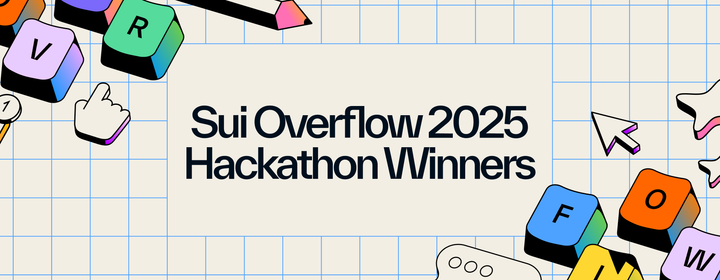Power to the Builder: Blockchain’s Ability to Center People Over Platforms
The expressiveness of Move and policy control on Sui open up creative opportunities for builders

With its ability to center people over platforms, blockchain can reinvent the internet. Self-custody offers individuals the ability to control and manage their assets and data. Onchain transactions support peer-to-peer exchanges between builders and customers. Together, these qualities can shift the digital world from one based on value extraction, where centralized entities control data and distribution for profit, to one based on value creation, where creators and users maintain control for their own benefit.
Many blockchains attempted to serve this vision, but suffered from poor network fundamentals and limited functionality. Sui's next generation approach focuses on human-centered products while offering the speed, stability, and cost-effectiveness the wider world has come to expect from network computing.
A shift in power
For well over a decade, users, creators, and startups have been taking control over the value they create. In 2009, Kickstarter launched to help individuals, and eventually small companies, crowdfund their creative projects, allowing them to tap into their community for financial support rather than relying on traditional out-of-reach sources of investment. Patreon and Substack similarly allow people to monetize the followings they created on social media, allowing those with relatively small but engaged audiences to produce work independently and profitably. Although the shift toward direct engagement has been a boon for many, these centralized platforms still control most of the rules of that engagement and may end up serving investors over their users.
Blockchain has the ability to push control even further into the hands of builders and creators. Decentralized finance (DeFi) allows anyone to access banking-like infrastructure, even without the participation of actual banks. Decentralized Autonomous Organizations (DAOs) offer communities the ability to manage their business and development through collective rule-making. And NFTs let artists and creators sell their work directly to their audience and earn royalties on secondary sales. In each case, smart contracts, designed by the builders themselves, replace centralized entities as the rule makers for how assets are traded, transferred, and managed.
But even with these improvements, the experience for builders has not been equal on all blockchains.
Increased creativity and control with Sui
The advent of smart contract platforms, particularly the launch of Ethereum in 2014, was an important moment in the move towards decentralized value creation and ownership. However, those chains’ storage structures were not ideal; assets were stored and managed by the smart contract rather than onchain. This limitation hamstrung builders from pushing the boundaries of what was possible, both creatively and economically.
Sui was designed from the ground up to improve upon those earlier chains, offering the most powerful infrastructure on which to build next generation apps, products, and services. From the beginning, it natively incorporated key features that unlock the power of direct ownership and peer-to-peer value transfer without the friction and headaches of older blockchain interfaces.
Composable and dynamic NFTs
For true innovation, technology must be capable of realizing a builder’s creative vision. Move, the programming language on Sui, is extremely expressive, offering builders the ability to go beyond static fungible and non-fungible tokens, opening up use cases, such as gaming, commerce, and social media, that faltered on other chains.
Sui’s object-oriented data model means that every user-level asset is programmable. Its distinct attributes are stored onchain and can be updated based on the governing logic of the smart contract that created it. As long as the original builder has permitted it, objects can own other objects, combining to make something wholly new without losing the original metadata. For example, a game could sell digital cat avatars and accessories such as collars, that when combined become a new collar-wearing cat avatar. But, because this combined object can be created without destroying the original objects, as happens on other chains, the original collar can be removed from the avatar and sold to someone else. Objects can also evolve over time (often called dynamic NFTs) based on different programmed triggers, both onchain and off. For example, an artist can develop a digital art piece that changes with the local weather using an oracle. These programming abilities allow for significant creative control on the part of the builder.
Policies and rules set through Kiosk
Of course, most builders also want to control how their creation is used and monetized. The Sui primitive Kiosk allows people to determine the transfer and trade policies for assets they create as well as set up shops to display and sell them. These policies include royalties, which cannot be skirted by third-party sellers. In addition, any asset using Kiosk will automatically be listed on any generally available Kiosk-capable marketplace, immediately increasing distribution without subverting the terms placed by the builder.
Teams building something creative and looking to grow on Sui should check out SUMM3R on Sui, an NFT growth program poised to take your startup to the next level.



